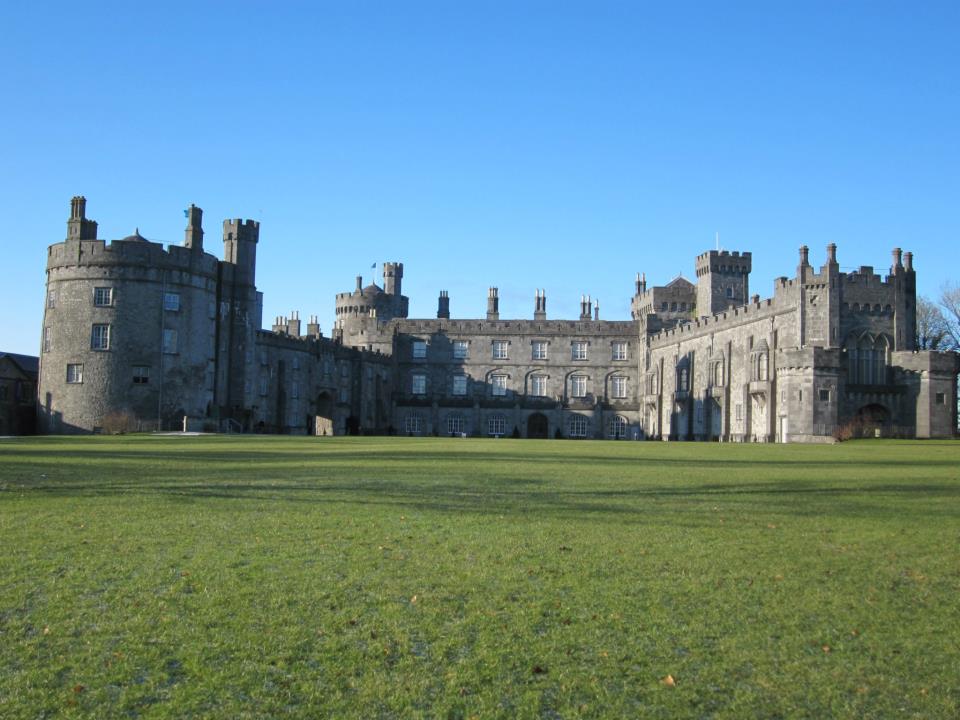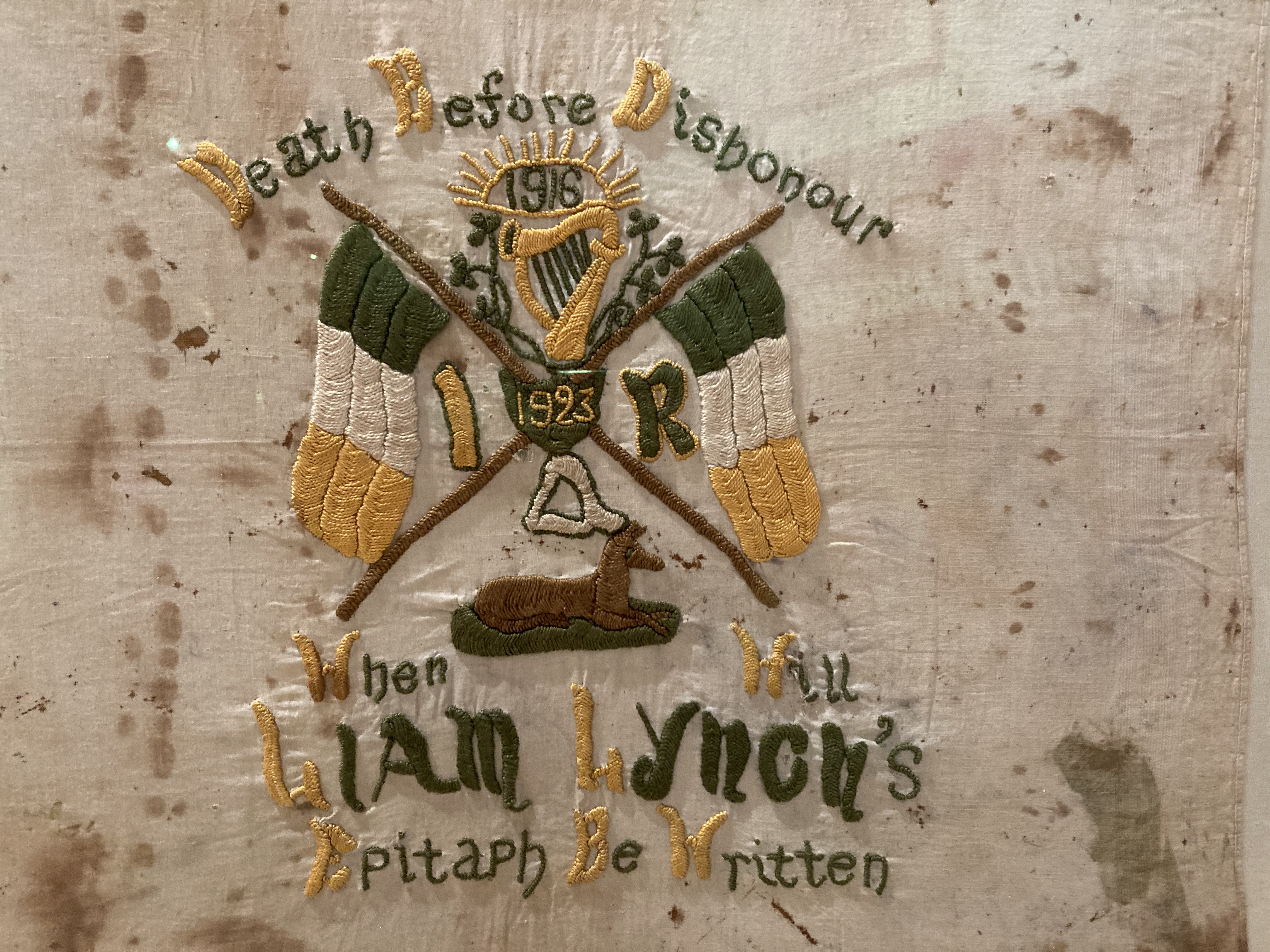|
John T. Prout
John T. Prout (October 25, 1880 – April 27, 1969) was an Irish soldier. He served in the United States Army in the First World War, as a training officer in the guerrilla Irish Republican Army during the Irish War of Independence (1919–1921) and held one of the senior commands in the National Army during the Irish Civil War (1922–23). First World War Prout was born in Dundrum, County Tipperary in 1880, but emigrated to the United States while still young. After the United States entry into the First World War in 1917, he enlisted at age 36 with the United States 69th Infantry Regiment. He spent five months attached to the French command staff and was awarded the Croix de Guerre. Irish War of Independence After the war he returned to Ireland, where he became involved in the agitation for Irish independence and joined the Irish Republican Army. He served as a training and intelligence officer to the Third Tipperary Brigade, based at Galtee Castle. Irish Civil W ... [...More Info...] [...Related Items...] OR: [Wikipedia] [Google] [Baidu] |
Dundrum, County Tipperary
Dundrum () is a village in County Tipperary, Ireland. In the 2016 census, the population was 165. It is in the barony of Kilnamanagh Lower. Location and access Dundrum village lies in the townland of the same name, one of eight in the civil parish of Ballintemple. It is in the Electoral Division of Kilpatrick, in the barony of Kilnamanagh Lower, in County Tipperary. The village itself is at the junction of the R505 and R661 roads, north-west of Cashel and north-east of Tipperary Town. The old Main Street (on the R505 road to Cashel) is in the eastern end of village and is the site of some new housing developments. Dundrum House Hotel and Golf Course is connected to the village by an avenue lined by mature lime trees on the Cashel Road. The other main housing estate is near the railway station at the western end of the village where the R661 road to Tipperary Town leaves the R505. Transport The main Dublin to Cork railway line passes through the village, though the ... [...More Info...] [...Related Items...] OR: [Wikipedia] [Google] [Baidu] |
Kilkenny
Kilkenny (). is a city in County Kilkenny, Ireland. It is located in the South-East Region and in the province of Leinster. It is built on both banks of the River Nore. The 2016 census gave the total population of Kilkenny as 26,512. Kilkenny is a tourist destination, and its environs include historic buildings such as Kilkenny Castle, St Canice's Cathedral and round tower, Rothe House, Shee Alms House, Black Abbey, St. Mary's Cathedral, Kilkenny Town Hall, St. Francis Abbey, Grace's Castle, and St. John's Priory. Kilkenny is also known for its craft and design workshops, the Watergate Theatre, public gardens and museums. Annual events include Kilkenny Arts Festival, the Cat Laughs comedy festival and music at the Kilkenny Roots Festival. Kilkenny began with an early 6th-century ecclesiastical foundation within the Kingdom of Ossory. Following the Norman invasion of Ireland, Kilkenny Castle and a series of walls were built to protect the burghers of what became a Norman ... [...More Info...] [...Related Items...] OR: [Wikipedia] [Google] [Baidu] |
Executions During The Irish Civil War
The executions during the Irish Civil War took place during the guerrilla phase of the Irish Civil War (June 1922 – May 1923). This phase of the war was bitter, and both sides, the government forces of the Irish Free State and the anti-Treaty Irish Republican Army (IRA) insurgents, used executions and terror in what developed into a cycle of atrocities. From November 1922, the Free State government embarked on a policy of executing Republican prisoners in order to bring the war to an end. Many of those killed had previously been allies, and in some cases close friends (during the Irish War of Independence 1919–1921), of those who ordered their deaths in the civil war. In addition, government troops summarily executed prisoners in the field on several occasions. The executions of prisoners left a lasting legacy of bitterness in Irish politics. The use of execution by the Irish Free State in the Civil War was relatively harsh compared to the recent British record. In contr ... [...More Info...] [...Related Items...] OR: [Wikipedia] [Google] [Baidu] |
County Wexford
County Wexford ( ga, Contae Loch Garman) is a county in Ireland. It is in the province of Leinster and is part of the Southern Region. Named after the town of Wexford, it was based on the historic Gaelic territory of Hy Kinsella (''Uí Ceinnsealaigh''), whose capital was Ferns. Wexford County Council is the local authority for the county. The population of the county was 149,722 at the 2016 census. History The county is rich in evidence of early human habitation.Stout, Geraldine. "Essay 1: Wexford in Prehistory 5000 B.C. to 300 AD" in ''Wexford: History and Society'', pp 1 - 39. ''Portal tombs'' (sometimes called dolmens) exist at Ballybrittas (on Bree Hill) and at Newbawn — and date from the Neolithic period or earlier. Remains from the Bronze Age period are far more widespread. Early Irish tribes formed the Kingdom of Uí Cheinnsealaig, an area that was slightly larger than the current County Wexford. County Wexford was one of the earliest areas of Ireland to be C ... [...More Info...] [...Related Items...] OR: [Wikipedia] [Google] [Baidu] |
Liam Lynch (Irish Republican)
William Fanaghan Lynch ( ga, Liam Ó Loingsigh; 20 November 1892 – 10 April 1923) was an officer in the Irish Republican Army during the Irish War of Independence of 1919-1921. During much of the Irish Civil War, he was chief of staff of the Irish Republican Army. On 10 April 1923, Lynch was killed whilst trying to escape an encirclement by Free State troops in south Tipperary. Early life Lynch was born in the townland of Baurnagurrahy, Anglesboro, County Limerick, near Mitchelstown, County Cork, on 20 November 1892. His father was Jeremiah Lynch and his mother was Mary Lynch (née Kelly), both of whom are buried in Brigown graveyard, Mitchelstown. During his first twelve years of schooling he attended Anglesboro National School. Lynch was living with his parents in Baurnagurrahy for the 1901 and 1911 censuses. In 1909, at the age of 17, he started an apprenticeship in O'Neill's hardware shop in Mitchelstown, where he joined the Gaelic League and the Ancient Order of Hiberni ... [...More Info...] [...Related Items...] OR: [Wikipedia] [Google] [Baidu] |
Knockmealdown Mountains
The Knockmealdown Mountains ( ga, Sléibhte Chnoc Mhaoldomhnaigh) are a mountain range located on the border of counties Tipperary and Waterford in Ireland, running east and west between the two counties. The highest peak of the range is Knockmealdown, in County Waterford. On the western side of the summit, the range is crossed by a high pass called ‘The Vee’ through which runs the old mail coach road from Lismore to Clogheen. The mountains were formerly known as ''Sliabh gCua'', sometimes anglicized 'Slieve Gua' or 'Slieve Goe'.Tempan, Paul"Sliabh in Irish Place-Names" Queen's University Belfast. p.29 Mountain peaks List of peaks in the Knockmealdown Mountains ordered by height: *Knockmealdown, ''Cnoc Mhaoldomhnaigh'' (794 m) *Knockmoylan, ''Cnoc Maoláin'' (768 m) * Knocknafallia, ''Cnoc na Faille'' (668 m) * Sugarloaf Hill, ''Cnoc na gCloch'' (663 m) *Knocknagnauv, ''Cnoc na gCnámh'' (655 m) *Knockshanahullion, ''Cnoc Seanchuillinn'' (652 m ... [...More Info...] [...Related Items...] OR: [Wikipedia] [Google] [Baidu] |
Dinny Lacey
Denis Lacey (31 May 1889 – 18 February 1923) was an Irish Republican Army officer during the Irish War of Independence and anti-Treaty IRA officer during the Irish Civil War. Early life and Irish War of Independence Lacey was born in 1889 in a village called Attybrick, near Annacarty, County Tipperary. His parents were Thomas Lacy and Ellen Hayes. He worked as a clerk and manager of a coal merchant in Tipperary Town, prior to the Irish War of Independence. He joined the Irish Volunteers in 1913 and was sworn into the secretive Irish Republican Brotherhood in 1914. He was introduced to the IRB by Seán Treacy. During the War of Independence (1919–1921) he was selected to command an IRA flying column of the 3rd Tipperary Brigade, in September 1920. The flying column mounted two successful ambushes of British forces - killing six British soldiers at Thomastown near Golden, and four Royal Irish Constabulary men at Lisnagaul in the Glen of Aherlow. In April 1921, following an ... [...More Info...] [...Related Items...] OR: [Wikipedia] [Google] [Baidu] |
Glen Of Aherlow
The Glen of Aherlow (Irish: ''Gleann Eatharlaí'') is a valley located between Slievenamuck and the Galtee Mountains in the western part of County Tipperary in Ireland. The principal village is Lisvarrinane (sometimes spelled Lisvernane). There is also a hamlet at Rossadrehid, where Aherlow creamery was located before its closure in the late 20th century. Other adjacent centres of population are the villages of Galbally (on the western fringe), Kilross (on the north west front) and Bansha (on the eastern approach). Across the northern flank of Slievenamuck lies Tipperary Town. The tradition of Geoffrey Keating still lives on in the folklore of the Glen of Aherlow. Keating preached sermons there, receiving refuge and, according to tradition, lived in a cave for much of the time while on the run and compiling his magnum opus, ''Foras Feasa Ar Éirinn'' (''c.'' 1634). Statue A statue, titled 'Christ the King', overlooks the valley in which the Glen of Aherlow is situated. The stat ... [...More Info...] [...Related Items...] OR: [Wikipedia] [Google] [Baidu] |
Tom Barry (Irish Republican)
Thomas Bernardine Barry (1 July 1897 – 2 July 1980), better known as Tom Barry, was a prominent guerrilla warfare, guerrilla leader in the Irish Republican Army (1919–1922), Irish Republican Army (IRA) during the Irish War of Independence and the Irish Civil War. He is best remembered for orchestrating the Kilmichael Ambush, Kilmichael ambush, in which him and his column wiped out a 18 man patrol of Auxiliary Division, Auxiliaries, killing sixteen men. Born in County Kerry, Barry was the son of a former Royal Irish Constabulary constable. In 1915, at the age of seventeen, he joined the British Army and would go on to see action as a gunner in the Middle Eastern theatre of World War I, Middle East during the World War I, First World War. Despite expressing some British patriotism during his early years, Barry's views slowly began to change towards Irish republicanism. In his memoir, Barry stated that this started shortly after he heard about the Easter Rising in 1916, though ... [...More Info...] [...Related Items...] OR: [Wikipedia] [Google] [Baidu] |
Clonmel
Clonmel () is the county town and largest settlement of County Tipperary, Republic of Ireland, Ireland. The town is noted in Irish history for its resistance to the Cromwellian conquest of Ireland, Cromwellian army which sacked the towns of Drogheda and Wexford. With the exception of the townland of Suir Island, most of the borough is situated in the Civil parishes in Ireland, civil parish of "St Mary's" which is part of the ancient Barony (Ireland), barony of Iffa and Offa East. Population The 2016 Census used a new boundary created by the Central Statistics Office (Ireland), Central Statistics Office (CSO) to define the town of Clonmel and Environs resulting in a population figure of 17,140. This new boundary omitted part of the Clonmel Borough Boundary which the CSO had defined as Legal Town for the 2011 census 11.55 km/sq. All of the 2011 census CSO environs in Co Waterford have been omitted as well as parts of CSO environs of Clonmel in Co Tipperary. The CSO as part of ... [...More Info...] [...Related Items...] OR: [Wikipedia] [Google] [Baidu] |
Cashel, County Tipperary
Cashel (; ) is a town in County Tipperary in Ireland. Its population was 4,422 in the 2016 census. The town gives its name to the ecclesiastical province of ''Cashel''. Additionally, the ''cathedra'' of the Roman Catholic Archdiocese of Cashel and Emly was originally in the town prior to the English Reformation. It is part of the parish of Cashel and Rosegreen in the same archdiocese. One of the six cathedrals of the Anglican Bishop of Cashel and Ossory, who currently resides in Kilkenny, is located in the town. It is in the civil parishes in Ireland, civil parish of St. Patricksrock which is in the historical Barony (Ireland), barony of Middle Third (South Tipperary), Middle Third. Location and access The town is situated in the Golden Vale, an area of rolling pastureland in the province of Munster. Roads It is located off the M8 motorway (Ireland), M8 Dublin to Cork (city), Cork Motorways in Ireland, motorway. Prior to the construction of the motorway by-pass (in 2004), the ... [...More Info...] [...Related Items...] OR: [Wikipedia] [Google] [Baidu] |






